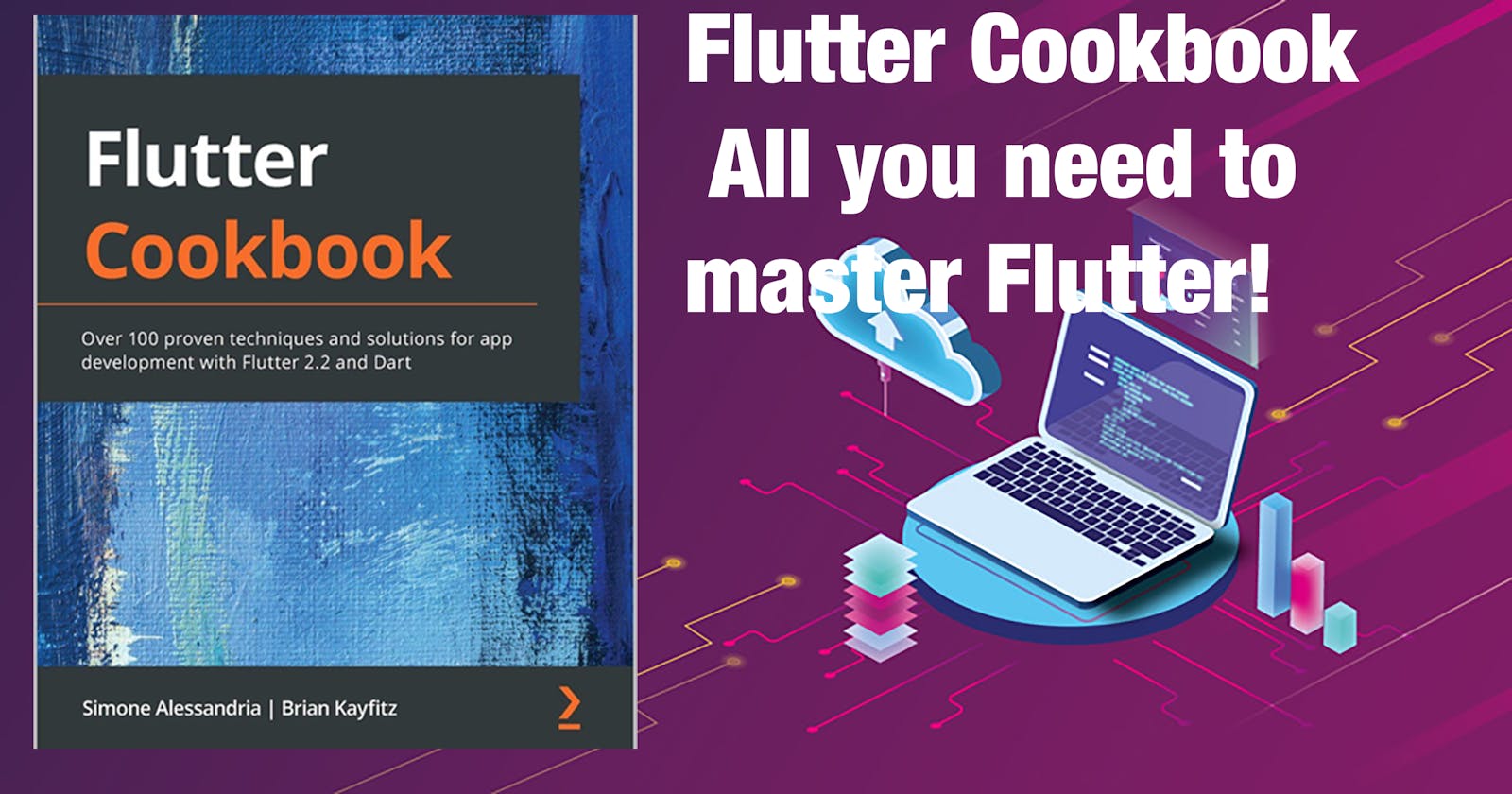Flutter Cookbook: Over 100 proven techniques and solutions for app development with Flutter 2.2 and Dart.
In this article, I'm going to share with you this really good book that I've learned a lot from it lately with the Flutter version 2.2. This book contains over 100 short recipes that will help you learn Flutter by example. These recipes cover the most important Flutter features that will allow you to develop real-world apps. In every recipe, you will learn and immediately use some of the tools that make Flutter so successful: widgets, state management, asynchronous programming, connecting to web services, persisting data, creating animations, using Firebase and machine learning, and developing responsive apps that work on different platforms, including desktop and the web. Flutter is a developer-friendly, open-source toolkit created by Google that you can use to create applications for Android and iOS mobile devices, and now that Flutter 2.2 has been released, you can also use the same code base for the web and desktop. There are 15 chapters in this book, which you can read independently from one another: each chapter contains recipes that highlight and leverage a single Flutter feature. You can choose to follow the flow of the book or skip to any chapter if you feel confident with the concepts introduced in earlier chapters. Flutter uses Dart as a programming language. Chapter 2, Dart: A Language You Already Know, is an introduction to Dart, its syntax, and its patterns, and it gives you the necessary knowledge to be productive when using Dart in Flutter. In later chapters, you'll see recipes that go beyond basic examples; you will be able to play with code and get hands-on experience in using basic, intermediate, and advanced Flutter tools.
Who this book is for?
This book is for developers who are familiar with an object-oriented programming language. If you understand concepts such as variables, functions, classes, and objects, this book is for you. Prior knowledge of Dart is not required as it is introduced in Chapter 2, Dart: A Language You Already Know. If you already know and use languages such as Java, C#, Swift, Kotlin, and JavaScript, you will find Dart surprisingly easy to learn.
What does this book covers?
Chapter 1, Getting Started with Flutter, will help you set up your development environment.
Chapter 2, Dart: A Language You Already Know, introduces Dart, its syntax, and its patterns.
Chapter 3, Introduction to Widgets, shows how to build simple user interfaces with Flutter.
Chapter 4, Mastering Layout and Taming the Widget Tree, shows how to build more complex screens made of several widgets.
Chapter 5, Adding Interactivity and Navigation to Your App, contains several recipes that add interactivity to your apps, including interacting with buttons, reading a text from a TextField, changing the screen and showing alerts. Chapter 6, Basic State Management, introduces the concept of State in Flutter: instead of having screens that just show widgets, you will learn how to build screens that can keep and manage data. Chapter 7, The Future Is Now: Introduction to Asynchronous Programming, contains several examples of one of the most useful and interesting features in programming languages: the concept of the asynchronous execution of tasks.
Chapter 8, Data Persistence and Communicating with the Internet, gives you the tools to connect to web services and persist data into your device.
Chapter 9, Advanced State Management with Streams, shows how to deal with Streams, which are arguably the best tool to create reactive apps.
Chapter 10, Using Flutter Packages, teaches you how to choose, use, build, and publish Flutter packages.
Chapter 11, Adding Animations to Your App, gives you the tools you need to build engaging animations in your apps.
Chapter 12, Using Firebase, shows how to leverage a powerful backend without any code!
Chapter 13, Machine Learning with Firebase MLKit, shows how to add machine learning features to your apps by using Firebase.
Chapter 14, Distributing Your Mobile App, outlines the steps required to publish an app into the main stores: the Google Play Store and the Apple App Store.
Chapter 15, Flutter Web and Desktop, shows you how to use the same code base to build apps for the web and desktop.

